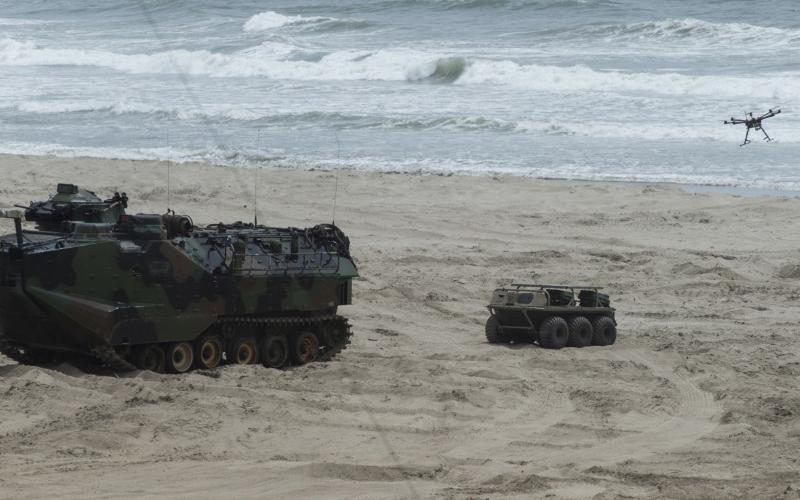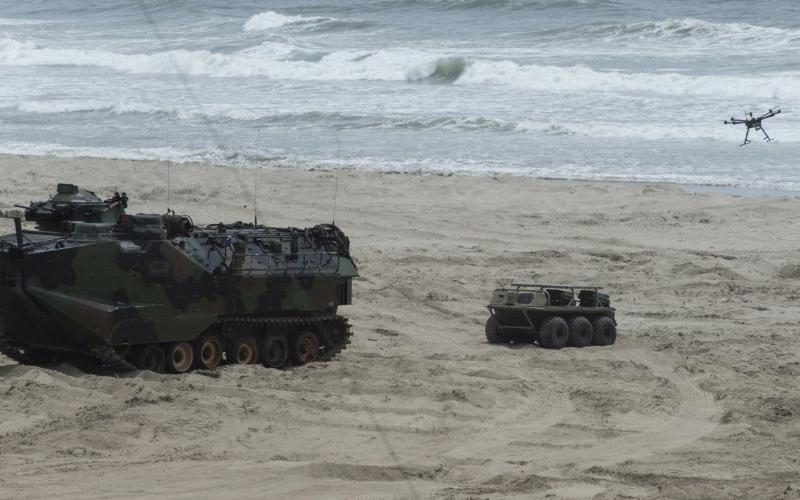

Direct feedback and technical evaluations from warfighters and senior leadership participating in an amphibious, autonomous warfare exercise could affect the way the U.S. Navy and Marine Corps look at prototyping and rapidly acquiring technology. By pairing sailors and Marines with scientists and technologists, the Ship-to-Shore Maneuver Exploration and Experimentation Advanced Naval Technology Exercise (S2ME2 ANTX) will help increase the pace of innovation, says Dr. David E. Walker, director of technology, Office of Naval Research (ONR).
Augmented reality systems and advanced wireless networks were among the technologies employed during the set of amphibious exercises at Marine Corps Base Camp Pendleton, California. Industry, academia and the Naval Research and Development Establishment (NR&DE) collaborated to demonstrate emerging technology innovations. The NR&DE includes the ONR and Department of the Navy research laboratories. In addition, hundreds of sailors, Marines and U.S. Defense Department civilian employees and contractors participated in S2ME2 ANTX.
S2ME2 ANTX focused on ship-to-shore maneuver, weapons fire support and effects, clearing assault lanes, command and control, and information warfare. More than 50 technologies were field tested during exercise activities, including sensor-laden unmanned vehicles and aircraft as well as swarming unmanned surface vessels all gathering intelligence in the air, on land and underwater.
During each amphibious beach demonstration, unmanned surface and underwater vehicles approached the shore first, collecting intelligence about battlespace conditions, including threats and obstacles. Using that information, warfighters had an accurate picture of what they would confront when leaving their vessels and vehicles.
The systems the ONR and Naval Research Laboratory (NRL) sponsored for the S2ME2 ANTX included the Battlespace Exploitation of Mixed Reality system, which merges virtual reality complete immersion in a simulated/virtual world and augmented reality in which virtual objects are imposed onto real-world vision through Oculus Rift goggles.
In addition, the ONR and NRL demonstrated the mine warfare rapid assessment capability, which comprises a small quadcopter outfitted with an ultra-sensitive magnetometer and sensors to detect mines and provide real-time data to a handheld Android device.
Because future operations are likely to involve multinational coalitions, exercise participants also examined the Coalition Tactical Awareness and Response (CTAR) system. The system uses satellite imagery to conduct surveillance of large areas of ocean, and then processes the image data to generate detailed reports about maritime activity in the area and share it with partners and allies.
Technologies that performed well at S2ME2 ANTX could be featured at Bold Alligator 2017, a multinational series of amphibious exercises led by U.S. Fleet Forces Command and U.S. Marine Corps Forces Command scheduled to take place in the fall.

